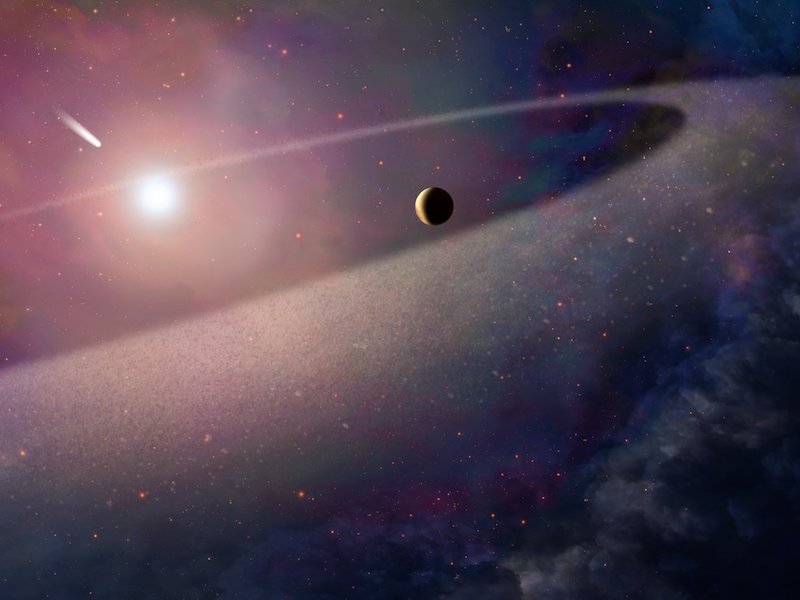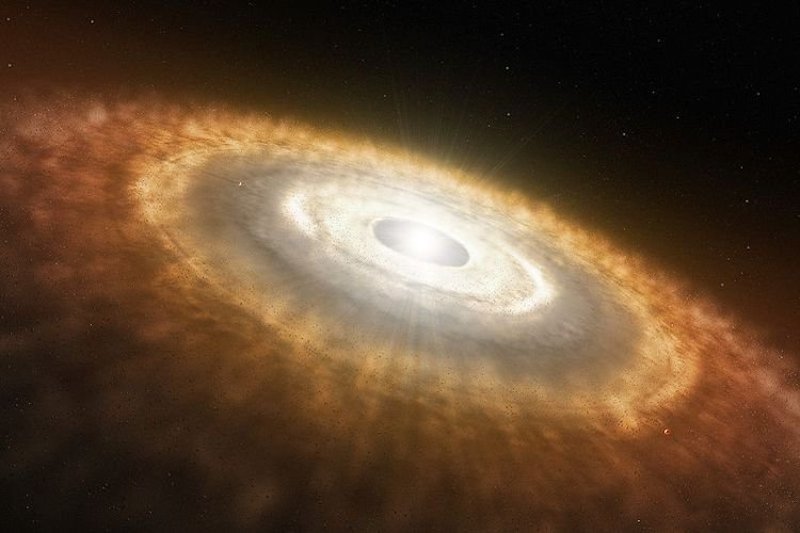
Planetary systems, like our own, are born in clouds of dust and gas surrounding their infant stars. But do stars and planets form together, at about the same rate? Or do they form at different speeds? An international team of astronomers, led by the University of Cambridge in England, reported on November 14, 2022, that, indeed, stars and planets form together, and quite rapidly. The researchers came to this conclusion after conducting observations and simulations of 237 “polluted” white dwarf stars.
The researchers published their peer-reviewed findings in the journal Nature Astronomy on November 14, 2022. You can also download a free PDF copy of the paper.
Stars and planets grow together
We know that planets form in clouds of dust and gas – called protoplanetary disks or circumstellar disks – around newly born stars. Those disks are composed of hydrogen, helium and particles of ice and dust. The dust particles, along with the other material, gradually clump together over millions of years. These clumps eventually become planetesimals, or small baby planets, if you will. Any leftover material becomes asteroids and comets.
However, scientists still debate the timing. Do the stars and planets form simultaneously, or do planets begin to take shape millions of years after the star? The new study shows that it is the former: Stars and planets tend to form pretty much at the same time. Amy Bonsor, lead author from the University of Cambridge, stated:
We have a pretty good idea of how planets form, but one outstanding question we’ve had is when they form: does planet formation start early, when the parent star is still growing, or millions of years later?
‘Polluted’ white dwarf stars
So, how did the researchers determine that stars and planets grow together? They looked at white dwarf stars, 237 of them to be exact. White dwarfs are basically dead stars. They still have atmospheres, however, and astronomers can analyze those atmospheres to see what they contain. And often, those atmospheres are polluted with heavier elements such as silicon, magnesium, iron, oxygen, calcium, carbon, chromium and nickel. Those elements are extraneous to the normal hydrogen and helium that the white dwarfs are composed of.
As Bonsor noted:
Some white dwarfs are amazing laboratories, because their thin atmospheres are almost like celestial graveyards.
Melting asteroids
Where did those elements come from? Most likely, small bodies such as asteroids. The asteroids collided with the white dwarfs and burned up in their atmospheres. The elements in the asteroids polluted the white dwarfs’ atmospheres as a result.
The analysis results are intriguing. They show that the asteroids had melted. This melting caused heavy iron to sink to the core while the lighter elements floated on the surface. This process, known as differentiation, also happened on Earth. In fact, it created Earth’s iron-rich core. Bonsor said:
The cause of the melting can only be attributed to very short-lived radioactive elements, which existed in the earliest stages of the planetary system but decay away in just a million years. In other words, if these asteroids were melted by something which only exists for a very brief time at the dawn of the planetary system, then the process of planet formation must kick off very quickly.

Iron-core planetesimals
Coauthor Tim Lichtenberg, previously at the University of Oxford when the research began and now at the University of Groningen, added:
The enrichment with heavy elements indicates that iron-core planetesimals have been falling onto the star. And such an iron core can likely only form if the fragment has been previously strongly heated. This is because that’s when iron, rock and more volatile elements are separated.
Heat released during the decay of short-lived radioactive elements likely created the iron cores, as with asteroids in our own solar system. We suppose that the element in question is aluminum-26. That element also drove the formation of planetary cores in our own solar system.
Learning how stars and planets form
The findings shed new light on how planetary systems form and evolve. Future observations can now build further on these results. Bonsor said:
Our study complements a growing consensus in the field that planet formation got going early, with the first bodies forming concurrently with the star. Analyses of polluted white dwarfs tell us that this radioactive melting process is a potentially ubiquitous mechanism affecting the formation of all extrasolar planets.
This is just the beginning; every time we find a new white dwarf, we can gather more evidence and learn more about how planets form. We can trace elements like nickel and chromium and say how big an asteroid must have been when it formed its iron core. It’s amazing that we’re able to probe processes like this in exoplanetary systems.
Bottom line: An international team of researchers has released a new study of “polluted” white dwarf stars showing that stars and planets likely form simultaneously.
Source: Rapid formation of exoplanetesimals revealed by white dwarfs
Source (PDF): Rapid formation of exoplanetesimals revealed by white dwarfs











